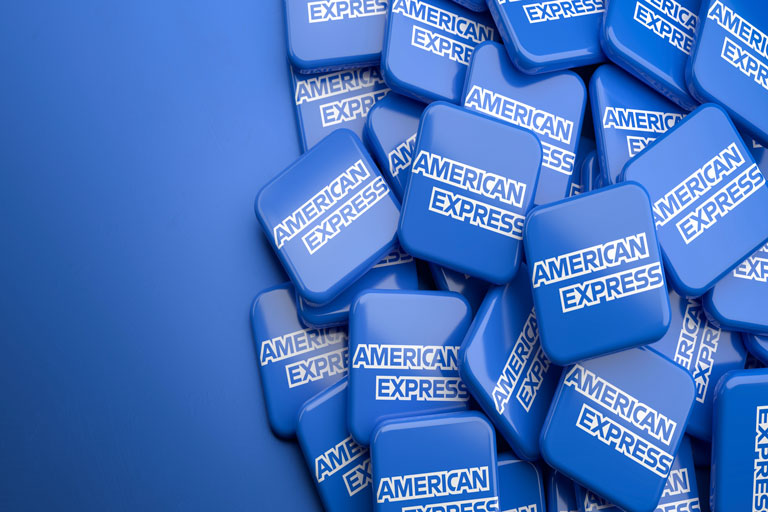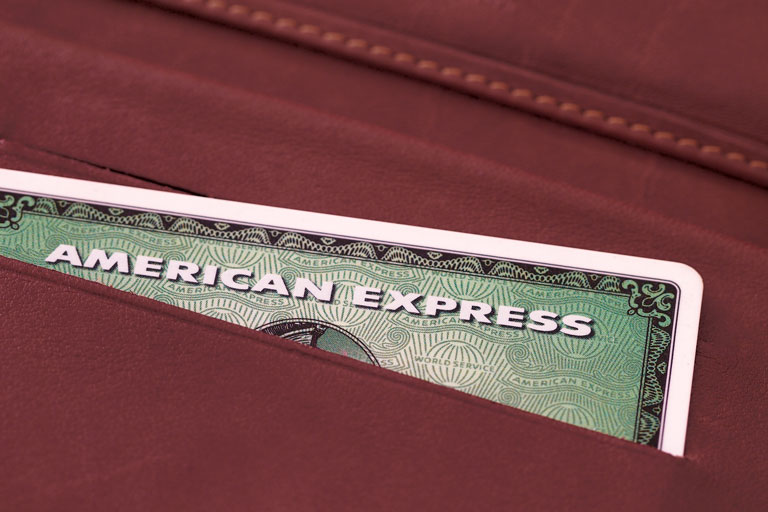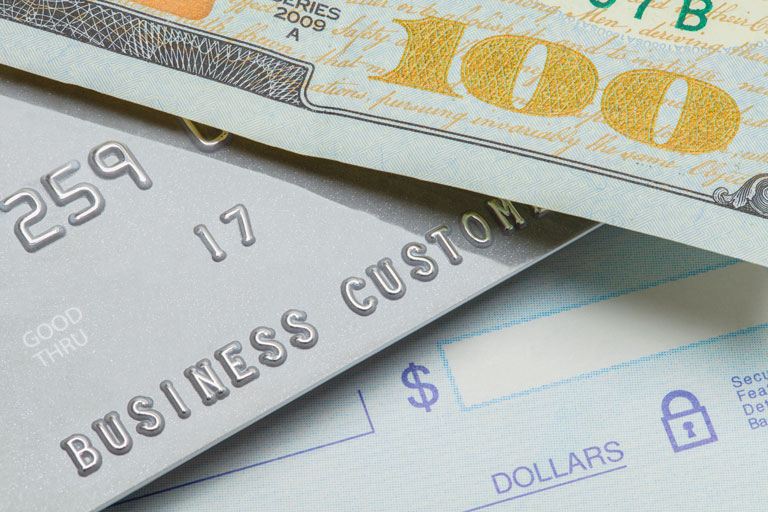You’ve come to this article in hope of answering a burning question, “Should my business accept American Express?” It can be frustrating for both customers and merchants when at check-out a cardholder pulls out their American Express credit card and is told, “Sorry, we do not accept Amex.”
It’s frustrating for the client because it is their go-to and possibly only credit card. And it’s frustrating for the merchants, because it may lose them a sale—or at least a positive customer experience. But why is this such a common theme?
Diversity and acceptance are most certainly buzzwords in business and marketing these days. But when it comes to the numbers game—e.g. payment methods—acceptance and diversity might have some limitations. The question is whether or not American Express falls inside or outside the lines of acceptable payment options.
If you’re a merchant, you know what we’re talking about—so read on to see if this article will change your perspective…or if you’ll still feel the same way (even if they send you fun stickers to put in the window).
Customers Like Payment Diversity
In broad terms, payment diversity means cash, check, or credit card. Customers want to be able to use any method of their choosing to pay for their goods and services.
Checks
But are customers really paying with checks anymore? Not really. Around 7% of payments are made with checks, mostly for bills. What’s more, the younger the consumer, the more they dislike checks.
In fact, only 2% of people actually prefer paying for anything with a check…and it’s likely that the people in that 2% primarily enjoy the ritual that check signing affords. Only 3% of consumers under the age of 44 want to use a check over other payment methods, and 0% are under the age of 25.
Cash
Now on to cash. Cash is king, right? Perhaps, if you sell things at a farmers market or you want to keep everything under the table (not the produce, of course—that goes on the table). Cash payments attract criminals and it needs to be regularly picked up or deposited.
Sure, it feels good to walk into your local bank with a leather zippered pouch full of cash (an accessory that is optimized with a nice Hawaiian shirt) but is that really something you want to take time out of your day to do? Actually, some business owners like that sort of thing…perhaps the same ones who like to sign checks. But many do not. Time is money.
Consumers don’t always seem to like cash either, with the same survey cited above revealing that just 28% say it was their preferred payment method. While that’s certainly better than 0% of consumers under 25 who carry a checkbook, it’s beneath the combined 65% of customers who prefer to use some sort of credit card or debit card.
Most consumers spending with cash are not doing it because they like contemplating the portraiture of past presidents while they wait in line, or hunting for Masonic symbols on the borders. They’re paying with cash because they’re bankless individuals who comprise about 5.9 million Americans, according to the FDIC.
Debit and Credit Cards
It’s credit and debit cards that consumers prefer to use, for a variety of reasons. One is that banks are increasingly offering sophisticated spending and budgeting software for free—the type of spending breakdowns that would make a CFO salivate over pie charts and graphs (well, pie does sound delicious in any context).
Another is that credit and debit cards are increasingly integrated into the mobile payment landscape, which means consumers can ditch their wallets and just carry around their smartphones. In fact, in pretty much every English-speaking country (and Germany) surveyed by eBay, 3 out of 4 consumers said they don’t want to carry leather, pleather, fabric, or even unique wallets made out of duct tape.
There are literally hundreds of digital payment options around the world, some of which have amusing names like LazyPay (in Asia). The most popular options are well known: Visa, Mastercard, American Express, Discover, PaPal, Venmo…the list goes on and on. Customers can get feisty about their preferred payment method, with Shopify estimating that as many as 50% of customers will leave your (online) store if they can’t pay with their preferred method.
Online Only Banks
An additional trend is the increase of online-only banks. Some of these banks have become household names, such as Robinhood. Although Robinhood is primarily an investing platform, it also offers (at this time) the only IRA with a 1% matching contribution, along with paying a fairly generous APY of over 4% on uninvested cash balances (albeit for gold members, which only costs $5 monthly).
A $40 return on parking ten Benjamins for the low price of $5 is a lot better than the 0.06% APY offered by the average brick-and-mortar bank, which is not even enough to purchase a cup of coffee. With stats like that, it’s no wonder that 30% of consumers have an account with a digital-only bank or plan to open one, with 57% of consumers saying that digital-only banks offered convenience they can’t get from traditional financial institutions.
Buy-Now-Pay-Later
To complicate matters further, there are new payment paradigms that have never been seen before, at least in their current incarnation. While buy-now, pay-later is as ancient as the first person who said “hit me back later,” fintech has enabled a new wave of consumer-friendly payment plans and financing that bypass traditional creditors and their horrendous interest rates.
Consumers can use platforms like Klarna, Afterpay, or Affirm to make purchases online and break the payment into manageable installments. Some of these options do not even carry interest charges, which is far more appealing than the average 23.55% credit card APR.

American Express Credit Cards
So the above said, we have seen that (1) customers appreciate, perhaps even need diversity in order to consider shopping with you and (2) they have lots of great options to choose from which don’t include cash, check, or traditional pieces of plastic. So why on earth would any customer in their right mind pay for something with American Express?
Amex Offers Some of the Best Credit Card Rewards
Spoiler alert: the answer is in the heading.
Consumers like rewards, and so do business owners. More on you (the business owner) later, so we can focus on consumers. Bank of America found that 65% of Americans applied for a new credit card because of its rewards, while 70% had multiple cards, and chose to use one card in particular because it has the best rewards. Around 69% of these polled card collectors said that cashback was their favorite reward, and their favorite choices were Capital One (43%) and Chase (36%).
Banks are offering rewards for every type of persona and taste. There are cards that give your points or cashback towards Amazon, Southwest Airlines, Disney, and Costco. There have even been cards that give cardholders extra rewards for Star Trek or Hello Kitty-related purchases (since discontinued, sorry Trekkies and Sanrio collectors). To clarify, there is not one credit card that rewards both types of purchases, as that would be a pretty bizarre overlap.
Venue Specific Rewards
But there are credit cards for very specific venues so that consumers can earn points for shopping at their favorite places. Many of these store credit cards are whitelisted by the company offering them in-store, whether it’s Target, Walmart, or Barnes & Noble—but are actually serviced by banks like Comenity Bank (which incidentally, is probably America’s largest purveyor of store-specific cards).
Don’t assume that banks are doing an altruistic favor for consumers, even if the arrangement works out well for both parties—especially consumers who don’t carry a balance, which incidentally, is a fairly high 45%. Points and rewards are a significant part of developing customer engagement and loyalty, so much so that banks are even exploring incentivizing debit cards.
Now on to a survey of American Express from the consumer point of view. It’s no secret that credit cards from American Express have annual fees. In fact, Amex is somewhat infamous as a credit card issuer even among consumers for these fees. But as it turns out, the pleasure may outweigh the pain—and in some cases, there is no annual fee.
American Express Blue Cash Everyday Card
Take for example, the Blue Cash Everyday Card with 3% cashback on supermarket purchases, online purchases, and gas stations, up to $6000, and then 1% back after that (and in general, 1% on all other purchases).
That means a cardholder could be getting $540 or more back annually if they max out the limits on gas, groceries, and Amazon purchases—and considering the average family spends around $1,500 per month on groceries, that threshold should not be so hard to reach (at least for the grocery category). This doesn’t even include the 1% back on everything else.
American Express Gold Card
Then there is the American Express Gold Card, which does have a $250 annual fee. Cardholders get 4 points per dollar at restaurants, 4 points per dollar at supermarkets (for up to $25,000 of spending), 3 points per dollar on travel reservations made through American Express, and one point per dollar on everything else.
Cardholders will also get $120 back annually on Uber and another $120 for eating with Grubhub, The Cheesecake Factory, ShakeShack, and a few other vendors. To put all these points into layman’s terms, an Amex point is often worth $0.005 (or half a penny). That means dining and supermarket shopping is essentially 2% cashback, while travel reservations are 1.5% cashback.
American Express Platinum Card
Next among American Express credit cards is the Platinum Card, with a $695 annual fee. Is it worth it? Cardholders get 5 points per dollar back on flights and hotels, and one point back on everything else, along with a $200 annual hotel credit, $200 UberCredit, $200 flight credit, and $240 digital entertainment credit.
Cardholders can also enjoy a drink in the Centurion Lounge at select airports, along with swiping as they please abroad because there are no foreign transaction fees (this is actually a significant consideration for travelers because the average foreign transaction fee is 3%).
American Express New Account Promotions
The survey of these exciting rewards and perks does not even encompass the promotions for opening these accounts, which include $200 for the Blue Cash, 60,000 points for the gold, and 80,000 points for the Platinum.
The exchange of points for tangible value with Amex depends on what the end result is, so cardholders could get even more for their points if they use them toward a statement credit or travel booked through Amex.
Are you opening a new tab on your browser to apply for an American Express credit card for business needs? Among card brands, Amex gives some of the best points and perks, despite the annual fees. The Platinum card from American Express, for instance, is an excellent card for individuals who travel frequently. And since Amex also manages travel arrangements, they can get great discount rates beyond the points and other perks every 12 months of card membership.
This is why consumers like American Express. While a survey cited at the outset of this section suggested that polled consumers really like Capital One, other surveys have found that Amex holders spend the most compared to other cards—$1,687 per month, compared to $843 (Visa), $737 (Discover), and $639 (Mastercard).
As a business owner, that statistic is very significant. In addition to these hard numbers, leading publications like U.S. News have found that consumer sentiment around Amex is favorable, with the card brand being perceived as one that provides stellar customer service and elite rewards.
Amex is also embedded in consumer consciousness in terms of dining arrangements and luxury in general. They’ve done a good job at marketing their brand, for instance by providing restaurants with bill wallets that are presented to diners at the end of a meal.

American Express Marketing Strategies
Credit cards in general are associated with living beyond your means and fewer things feel more luxurious to consumers than paying for something with an Amex. But beyond yachts, caviar, and bespoke Swiss timepieces, Amex is also an exceptional marketer, leveraging digital-age sentiments and trends like women’s rights and influencer marketing.
We mentioned earlier that we would touch upon business owner sentiments around Amex. A study conducted by J.D. Power of 3,000+ businesses with revenue of $10,000 to $10 million has found that business owners actually like Amex the most in terms of scored satisfaction, followed closely by Chase and Bank of America. With cards like the Amex Business Platinum Card and its 120,000 opening point bonus, it’s easy to see why.
So now that we’ve shown how highlighted how awesome the perks and rewards of Amex are, how much consumers and business owners like it, and how studies have shown that Amex cardholders spend more money, the question is whether or not you should join (or remain) in the 99% of U.S. businesses that accept American Express?
Why is American Express Not Accepted at Certain Businesses?
We’re not very good at hiding the most important information, are we? Of course, there’s a reason why stores don’t accept American Express (albeit just 1% of U.S. merchants and perhaps more outside the U.S.). American Express credit card processing fees are sometimes the highest in the industry, leading some businesses to post on their doors or near the point of sale: We do not accept American Express.
To look at the numbers, interchange fees for Mastercard range from 1.45% to 2.90%, Visa from 1.30% to 2.60%, Discover from 1.55% to 2.45%, and American Express from 1.80% to 3.25%. These, of course, are in addition to any other transactional fees like the monthly fee for the merchant’s payment processor and merchant fees for their bank.
All these swipe fees (or fees for chipping and dipping) are one the biggest love-hate relationships small businesses face and need to live with. Merchant American Express fees are steep, but the convenience of plastic (or digitized plastic) is something merchants should not turn away…although merchants may decide to turn away one option that’s very expensive to process and accept all the others as a compromise.
Your Business Should More Than Probably Accept American Express
But the picture is actually more nuanced than that. Especially with changes that Amex has made to American Express merchant services in recent years. Unlike Visa and Mastercard, which allow anyone to issue their cards (well, not exactly anyone).
Discover and Amex are closed networks. This means they can have a little more control of their pricing. Which is actually much more complex than the 3.25% merchants view as the blue elephant in the room.
Part of this depends on your business or organization. Amex fees for the public sector are as low as 1.10% + $0.10 per transaction, 1.25% + $0.01 per transaction for insurance, and 1.40% + $0.10 for residential. This means if you are a local municipality collecting parking fines, an insurance agency collecting premiums, or a landlord collecting rent, you should not post a “we do not accept American Express” sign on your office door.
But wait, there’s more. Amex is well aware of the fact that its pricing points are bumping small merchants out of their fanbase. To that end, they launched a program called OptBlue, which allows merchants to bundle Amex payments with cards from other networks.
Because their payment processor can set the rates—effectively lowering the rates that these small business owners pay to accept Amex. Businesses surpassing the $1 million revenue mark can use the same payment processor they’re already using and start accepting Amex without the pain of those 3% interchange fees.

Conclusion
So to summarize, if you own a small to medium size business, you should certainly accept Amex, because you no longer need to pay those luxurious rates. Aside from that, there is a clear indication that business owners (who may be some of your customers, especially if your business is mainly B2B) and consumers like Amex and spend more money with it—which means more money for you.
Looking for more reading on increasing profits? Check out our articles geared toward your small business:
Simple Ways Boost Your Sales By 31% in 2023
8 Financial Tips All Small Business Owners Should Know
Everything Your Small Business Should Know About Liquidity
How The Rich Scale Their Businesses
To contact sales, click HERE. And to learn more about ECS Payment Processing visit Credit & Debit.
